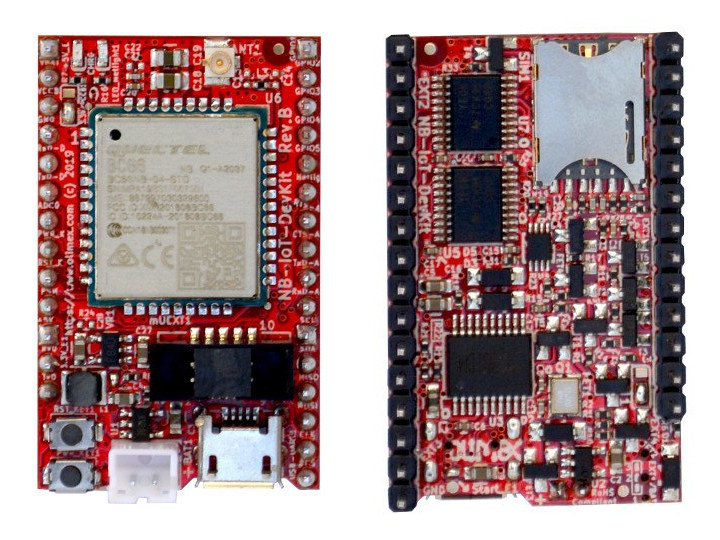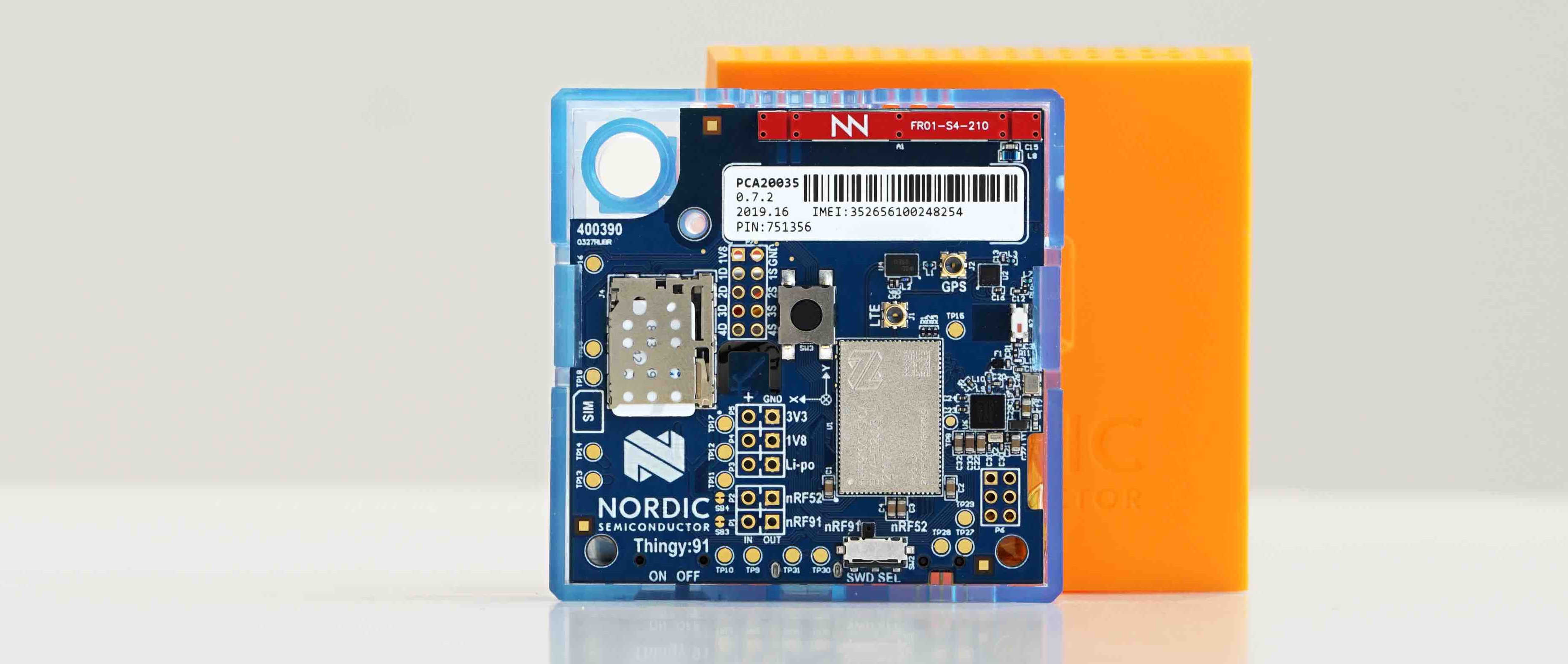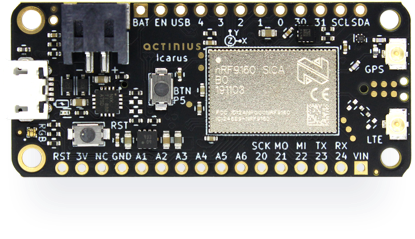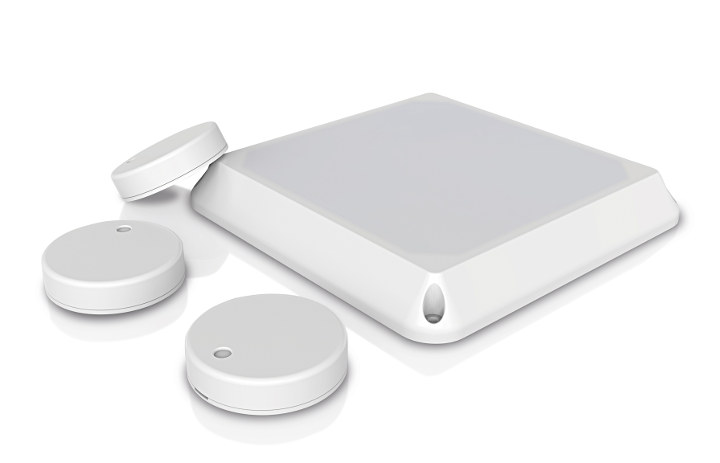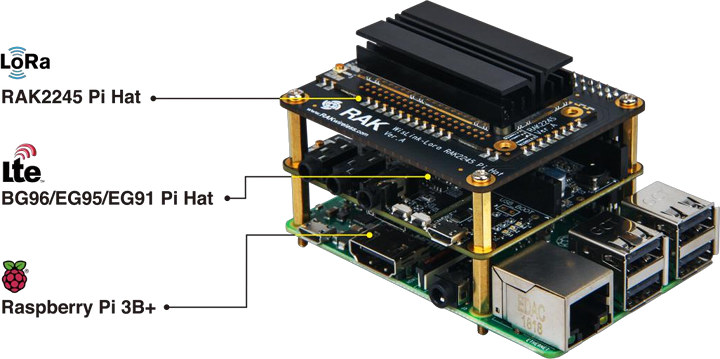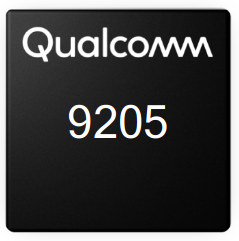CNX Software interviews Ken Yu, RAK Wireless’ founder & CEO, to learn more about the company and the current & future state of the LPWAN (Low Power WAN) market especially with regards to NB-IoT and LoRaWAN. CNXSoft: We’ve already covered several products from RAK Wireless on CNX Software, starting with WiFi IoT boards several years ago, and more recently LPWAN products based on NB-IoT or LoRa. But for readers who may not be familiar with RAK Wireless yet, could you provide a short description of what the company does? Ken Yu: RAKwireless was founded in 2014. The core founder team consists of professionals coming from established leaders in the Networking industry as Qualcomm, H3C, etc. Because our engineers have more than 10 years of experience designing Wi-Fi solutions, this was the core of our business in the beginning. RAKwireless is working towards a vision of a connected world and In […]
Olimex Launches NB-IoT DevKit Based on Quectel BC66 Module for 19 Euros
There are three LPWAN standards currently dominating the space LoRaWAN, NB-IoT, and Sigfox. In a recent presentation, Olimex explains NB-IoT (aka LTE Cat NB1) offers several advantages over LoRaWAN and Sigfox which include: Higher speeds of up to 25.5 kbps (UL/DL) Single GSM base station can handle up to 100 000 NB-IoT nodes Single GSM base station can cover up to 10-100km range in rural environments, and 1 to 10km in urban settings Lasts up to 10 years on a Lithium 3V battery if less than 200 bytes are sent per day The main disadvantage they listed was operator dependence, as you rely on the operator for coverage, and anything related to connectivity. In Bulgaria in particular, they found out it was not easy to get an NB-IoT SIM card activated, and the operator may shut you off without notice. For reference here in Thailand, last time I checked I […]
Nordic Thingy:91 Cellular IoT Prototyping Platform Comes with 16 Sensors
Nordic Semiconductor launched the Nordic Thingy:52 back in mid-2017 in the hopes of bringing app and web developers into the hardware ecosystem as fast and easy as possible. The Nordic Thingy:52 was a Bluetooth 5 IoT sensor development kit based on the company’s nRF52832 WiSoC. Although the Nordic Thingy:52 kit is still very much available for purchase and support always available, Nordic Semiconductor has gone further launching a new development kit called the Nordic Thingy:91 targeting cellular IoT applications. The Nordic Thingy:91 is a cellular IoT prototyping platform with support for LTE-M, NB-IoT plus GPS option. Even though IoT connectivity standards like LoRaWAN, BLE, WiFi, ZigBee, and others are very much growing and expanding, Nordic Semi is fully backing cellular technology, something that has very much been available and most likely will still keep been available, and the adoption of 5G is another testimony to that. Cellular is here, and […]
Icarus IoT Board Features nRF9160 GPS + NB-IoT SiP in Adafruit Feather Form Factor
The new Icarus IoT board from Actinius, uses the Nordic nRF9160 SiP, a powerful yet low power system in a package designed for use with GPS and LTE-M & NB-IoT cellular data, also found in Ruuvi node which we covered a few months ago. The board’s purpose is for mobility and ease of project tracking anywhere, and can be found in application scenarios such as fleet management and security, cargo tracking, or asset monitoring, and many more. The board has power inputs for solar panel, USB or LiPo/Li-Ion Battery, which widens the boards mobile nature, and on-site, in-the-field capability. Since the form factor follows Adafruit Feather, the Icarus board benefits of additional component options for prototyping and DIY electronics projects. The nRF9160, by Nordic Semiconductor, is a SiP (System in a Package) that carries an extensive line of embedded software and hardware. As we had reported the nRF9160 SiP low-power […]
Ruuvi Node Open-source Node Solution Combines Nordic Semi nRF9160 Cellular SiP & nRF52840 Bluetooth SoC
Back in 2016, we covered Ruuvi Innovations’ Ruuvitag open source Bluetooth & NFC sensor beacon is based on Nordic Semi nRF52832 Bluetooth SoC. The company has now introduced Ruuvi node, another open source multi-purpose, industrial-grade cellular gateway, environmental sensing, and asset tracking node solution based on not one, but two Nordic Semi chips with nRF91 cellular IoT SiP (System-in-Package) with NB-IoT and LTE M (eMTC) connectivity and nRF52840 multi-protocol Bluetooth 5.0 SoC. It’s an early announcement with the launch of the first pilots of Ruuvi Node planned for Q2/Q3 of this year, so the full specifications are yet to be released. However, thanks to a press release on Nordic Semi website, we do know that Ruuvi Node is meant to be maintenance-free, will include a solar panel for energy harvesting (which mean the included 45Wh battery may never run out depending on the application), several environmental sensors, GPS positioning provided […]
RAK Wireless Introduces DIY Cellular LoRa Gateways, Raspberry Pi & 96Boards Compatible LoRa Modules
RAK Wireless already has a decent offering of LoRa gateways and modules, but the company has been working on two new LoRa gateways, one Enterprise grade model – RAK7249 gateway – based on fully custom hardware, and the other – Pilot Gateway Pro RAK7243 – features a Raspberry Pi 3B+ board with Cellular & GPS connectivity on top of a LoRa radio. RAK Wireless will also introduce three RAK2245/RAK2248 LoRa concentrator modules that can easily be used with boards following Raspberry Pi, or 96Boards IoT edition form factors. RAK7249 DIY Enterprise LoRa Gateway Specifications: Main Board WiFi Module – RAK634 Module SoC – Mediatek MT7628N MIPS processor @ up to 580 MHz System Memory – 128MB DDR2 RAM Storage – 16MB SPI flash Connectivity – WiFi: 2×2 MIMO 802.11b/n/n mPCIe LoRa concentrator card Semtech SX1301 based Standard version with 8 channel Gateway and also support Max.16 channel Gateway. Tx Power […]
Mictrack MT825 is a Waterproof LTE Cat M1 & NB-IoT GPS Tracker
We’ve previously covered Mictrack MT600 4G LTE GPS tracker with support for various GPS software such as the open source OpenGTS and Traccar programs, as well as Android & iOS mobile apps. Since then the company released MT550 model with NB-IoT and LTE Cat M1 (eMTC) connectivity, as well as an OBD-II model that are currently sold for respectively $99 and $69 on Aliexpress. More recently a waterproof LTE IoT module called Mictrack MT825, which we’ll look into more details in this post. Mictrack MT825 key features and specifications: Cellular Connectivity LTE Cat M1 (eMTC) LTE FDD: B1/B2/B3/B4/B5/B8/B12/B13/B18/B19/B20/B26/B28 LTE TDD: B39 LTE Cat NB1 (NB-IoT) – LTE FDD: B1/B2/B3/B4/B5/B8/B12/B13/B18/B19/B20/B26/B28 2G – GSM: 850/900/1800/1900Mhz SIM Card interface – Nano SIM Internal LTE CAT M1 & NB-IoT antenna Location U-blox MAX-7 GPS chip GPS sensitivity – -162dBm Channel – 56 Positioning Accuracy – 10m Cold Start – 30s. Warm start – 15s […]
Qualcomm 9205 NB-IoT & Cat M1 LTE Modem Lowers Costs, Power Consumption
Qualcomm has introduced a new LTE IoT chipset with Qualcomm 9205 LTE modem that supports Cat M1 (eMTC), NB2 (NB-IoT), 2G/E-GPRS fallback, as well as GNSS. Qualcomm 9205 comes at a lower price, smaller footprint, and up to 70% lower power consumption in standby mode compared to its predecessor (MDM9206). Qualcomm 9205 LTE modem key features and specifications: Processor / OS – Arm Cortex A7 up to 800MHz with support for ThreadX and AliOS Things real-time operating systems Connectivity Standards 3GPP release 14 Category M1 and NB2; 2G/E-GPRS fallback where Cat M1 / NB2 is not available. Category M1 mode supports voice for applications such as monitored security panels, and mobility for applications such as asset trackers. RF transceiver Bandwidth support from 450 MHz to 2100 MHz Built-in RF front-end, a first in the cellular IoT space Geolocation Integrated GNSS (Global Navigation Satellite Systems) support for GPS, Beidou, Glonass, and […]



